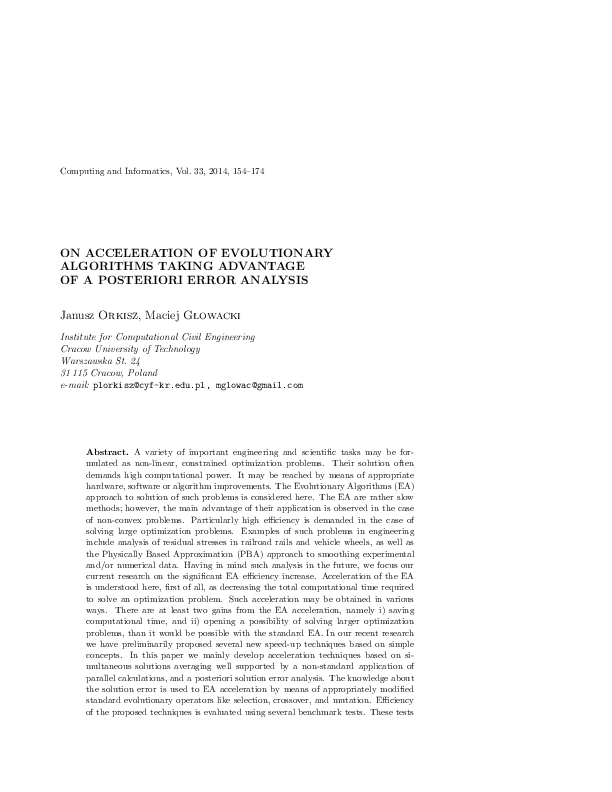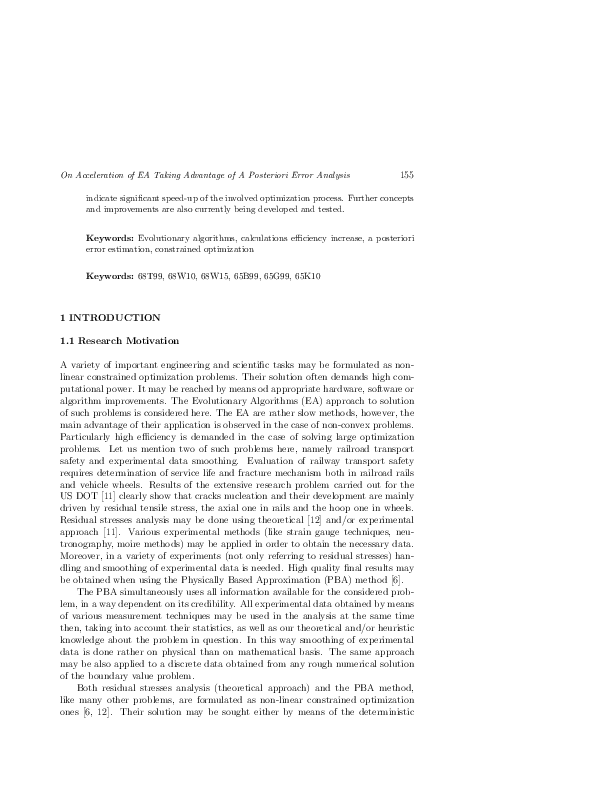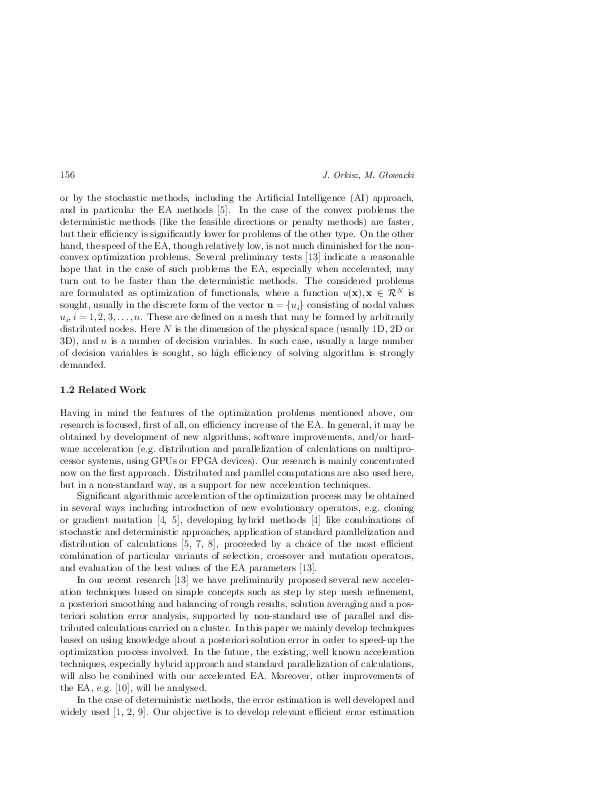On Acceleration of Evolutionary Algorithms Taking Advantage of A Posteriori Error Analysis
keywords: Evolutionary algorithms, calculations efficiency increase, a posteriori error estimation, constrained optimization
A variety of important engineering and scientific tasks may be formulated as non-linear, constrained optimization problems. Their solution often demands high computational power. It may be reached by means of appropriate hardware, software or algorithm improvements. The Evolutionary Algorithms (EA) approach to solution of such problems is considered here. The EA are rather slow methods; however, the main advantage of their application is observed in the case of non-convex problems. Particularly high efficiency is demanded in the case of solving large optimization problems. Examples of such problems in engineering include analysis of residual stresses in railroad rails and vehicle wheels, as well as the Physically Based Approximation (PBA) approach to smoothing experimental and/or numerical data. Having in mind such analysis in the future, we focus our current research on the significant EA efficiency increase. Acceleration of the EA is understood here, first of all, as decreasing the total computational time required to solve an optimization problem. Such acceleration may be obtained in various ways. There are at least two gains from the EA acceleration, namely i) saving computational time, and ii) opening a possibility of solving larger optimization problems, than it would be possible with the standard EA. In our recent research we have preliminarily proposed several new speed-up techniques based on simple concepts. In this paper we mainly develop acceleration techniques based on simultaneous solutions averaging well supported by a non-standard application of parallel calculations, and a posteriori solution error analysis. The knowledge about the solution error is used to EA acceleration by means of appropriately modified standard evolutionary operators like selection, crossover, and mutation. Efficiency of the proposed techniques is evaluated using several benchmark tests. These tests indicate significant speed-up of the involved optimization process. Further concepts and improvements are also currently being developed and tested.
reference: Vol. 33, 2014, No. 1, pp. 154–174


